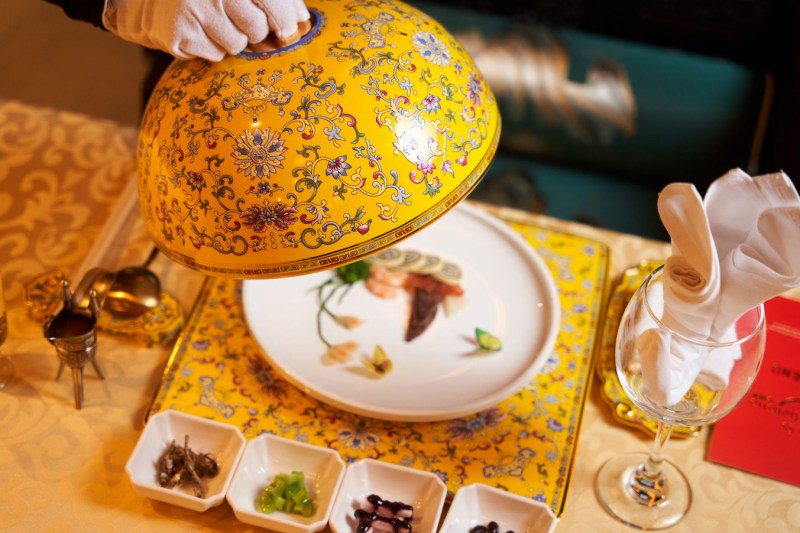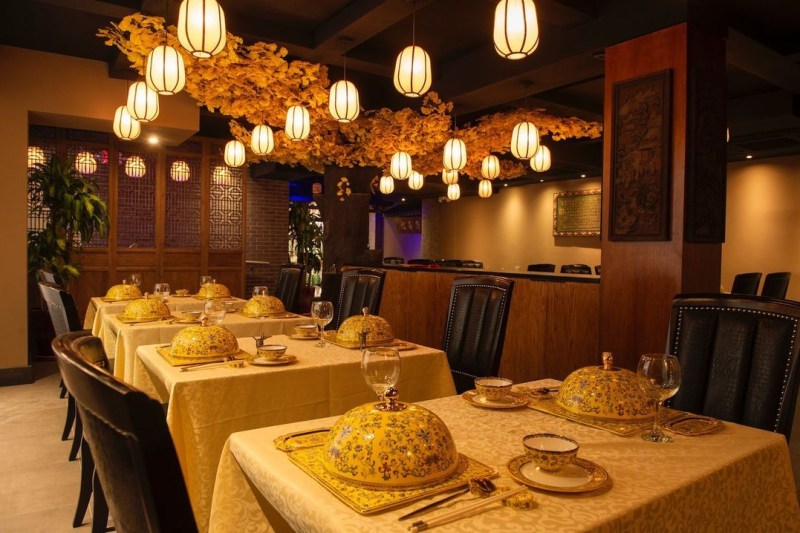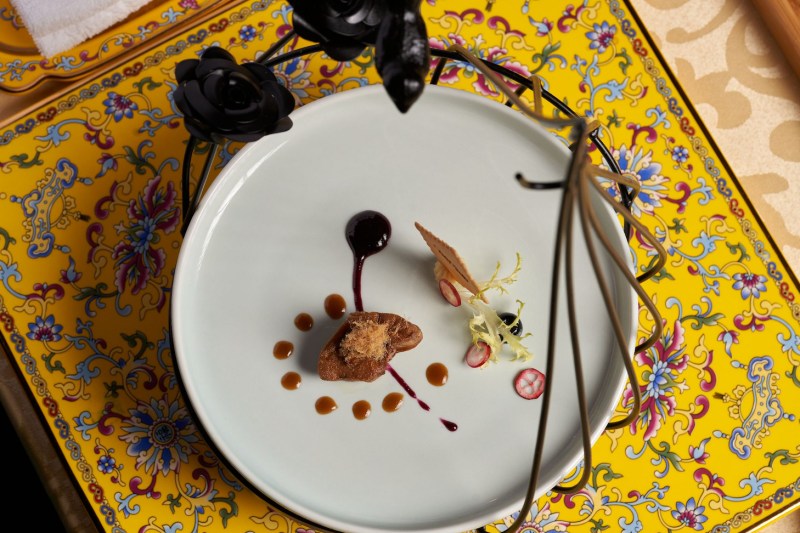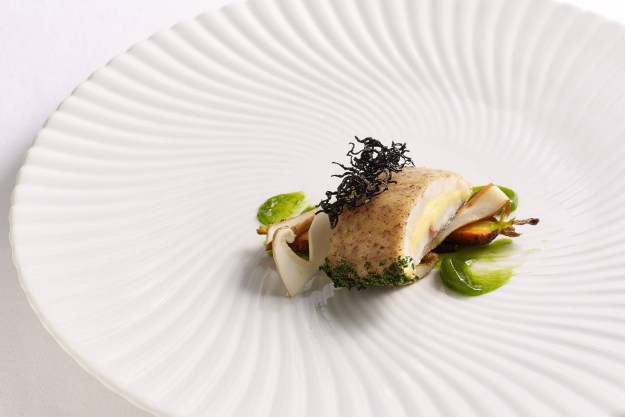
Step inside the restaurant Chef Guo, and the first thing you’ll be greeted with is a majestic model of a ginko tree, the national tree of China, complete with brightly colored golden leaves. The tree cascades over the dining room, a space filled with Chinese calligraphy on the walls and regal Indonesian Zi Tan rosewood chairs. Soft and pleasant Chinese instrumental music plays in the background, an oasis in an otherwise hectic Midtown Manhattan.
Chef Guo is a one-of-a-kind Chinese restaurant serving a particular style of Chinese cuisine that is still relatively hard to find in America: Imperial Chinese cuisine. With its thousands of years of history and culture, it should come as no surprise that Chinese cuisine is endlessly diverse. While there has been an increase in the diversity of Chinese restaurants in America, this style of Chinese cuisine is hard to find even among the plethora of Chinese food in NYC. With 30 years of culinary experience and a pedigree that’s served world leaders at state banquets, Chef Guo Wen Jun is a culinary master with a unique story to tell.
Imperial Chinese cuisine

Simply put, imperial Chinese cuisine is, as the name suggets, a style of cooking originally designed to grace the table of the emperor of China. Some of the most popular Chinese dishes, such as Peking duck, have origins in this culinary arts style. Since the fall of China’s imperial dynasties, this style is now generally enjoyed at formal occasions, particularly state banquets and other high-end dining events.
Dishes at imperial-style banquets are carefully crafted, focusing on flavor and presentation. Even the choice of color for the plates at Chef Guo has been carefully curated. When guests arrive at Chef Guo, their first dish is already on the table, covered in a yellow domed food plate. This specific yellow color was historically reserved only for the emperor, giving diners at Chef Guo a taste of food fit for a royal setting.
The Chef Guo menu

To start, dining at Chef Guo is not cheap. The 19-course tasting menu is currently priced at $518 for one. From a pricing standpoint, this is on par with other fine dining restaurants. While the price tag might be eye-catching, it’s not that far-fetched for fine dining in NYC, especially when several sushi omakases in the city run north of $500 per person.
At first, 19 courses seems overwhelming to the stomach, but the tasting menu is surprisingly light. A key aspect of achieving this balance is Chef Guo’s emphasis on tea pairings. Three rare teas are served at different stages of the meal: White Pekoe Silver Needle Tea from Fujian Province, Big Red Robe Tea, and earthy Pu’er tea. The result is that these teas act as a palate cleanser and pair well with the luxury of the many food courses.
Each of the courses is presented beautifully and with an artistic flair. While all of the courses are delicious, two items stand out: The first dish, Butterfly Falls in Love with the Flower, made with edible rice paper “butterflies,” and the Sea Bass with Fried Noodles. The sea bass is delicate yet rich, covered in a sweet and sour sauce that’s perfect with the crispness of the thin noodles on top. Wash it down with a sip of the fruity Red Robe tea, and the bite will be perfection.
Editors' Recommendations
- Learn these amazing spring cooking tricks from a Michelin Star chef
- How to reheat pasta so that the leftovers taste just as good
- These are the 25 best restaurants in America right now
- We’ve all been eating our Chinese takeout wrong
- Want incredible sushi in NYC? Go to this speakeasy (really!)




